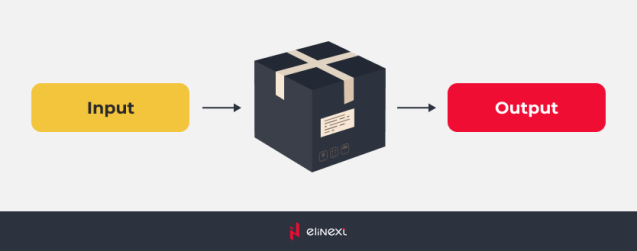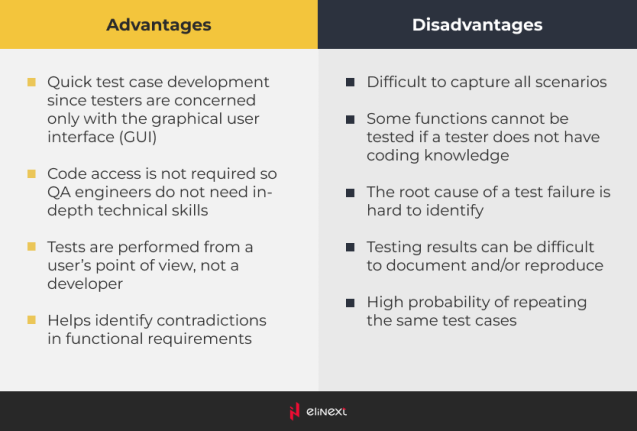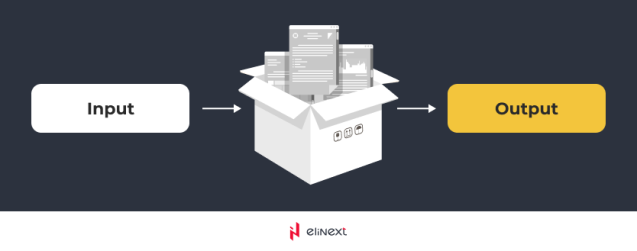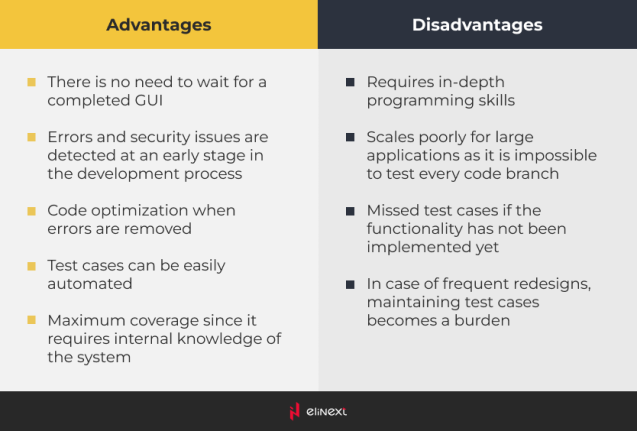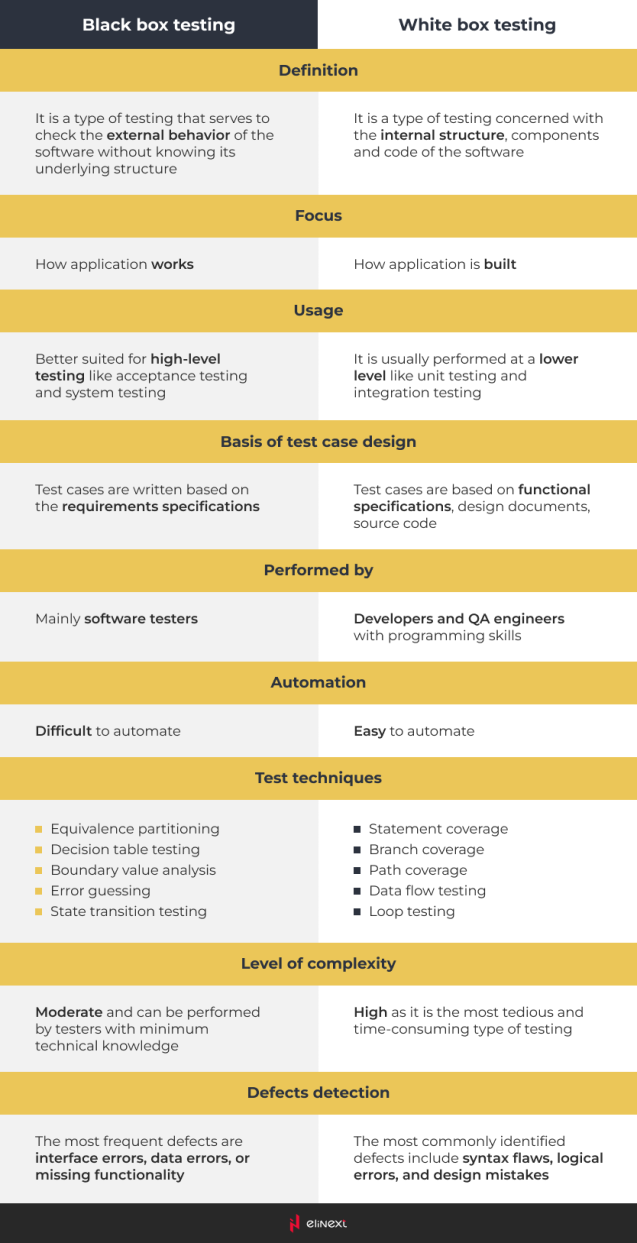It goes without saying that testing and quality assurance is an essential component of the software development lifecycle (SDLC). Well-planned and meticulous software testing helps companies ensure better usability and overall superior quality of their products while reducing risks and maintenance costs. In fact, high-performing organizations that successfully incorporate quality assurance spend 22% less time on unplanned work and more on developing new features that delight users. And the worldwide software testing market is projected to exceed $60 mln by 2027, growing at a CAGR of 7%.
In the field of software testing, there are a lot of approaches, but our focus today is on two primary methods commonly used by QA engineers — black box testing and white box testing.
Black box testing
Black box testing is a high-level method that is involved with the behavior of the application under test (AUT), hence another name — behavioral testing. This type of software testing does not require testers to have deep knowledge of the underlying structure, design, or implementation details. Instead, they rely on the software documentation and requirements specifications to validate the system from a user’s perspective.
Black box testing encompasses three major types:
- Functional testing aims to test specific functions or features of the AUT. It is concerned with validating the most critical aspects of the system (smoke testing or sanity testing), integration between key components (integration testing), and the system in general (system testing).
- Non-functional testing is focused on checking non-functional aspects of the AUT that aren’t critical to functionality but contribute to the end user experience. These parameters can include, among other things, reliability, scalability, performance, security, etc.
- Regression testing is carried out after an upgrade or a new release to make sure that new changes or tweaks have not deteriorated the system’s functionality or non-functional aspects.
Just like any approach, black box testing has its own set of distinct benefits and drawbacks that you need to take into consideration.
White box testing
In contrast to black box testing, which allows testers to check only the inputs and outputs of the AUT, white box testing enables QA engineers to get a deeper look under the hood into the inner workings of the system and validate the system’s architecture, code, and integrations. As part of automated software testing services and manual software testing services, white box testing, also known as clear box or glass box testing, requires certain programming skills and extensive knowledge of the technology used to build the system. This type of testing is often performed by developers early on in the development cycle.
As for the main types of white box testing, here are some of them:
- Unit testing is the first level of software testing and it aims to check that individual components, or units, operate as intended. This helps detect flaws in code early on and make debugging much easier and less expensive.
- Integration testing that takes place after unit testing is focused on combining different modules or components and testing them as a group. The purpose is to detect any errors in the interaction of interfaces and to validate that the behavior of a combined unit is as intended.
- Static code analysis, also known as structural analysis, involves meticulous reviewing of the static elements in the code without executing it.
- Dynamic code analysis, as the name suggests, involves running the code and analyzing the application during its execution. It complements static analysis and helps identify issues that can impact the system’s performance or reliability.
- Mutation testing is a type of white box testing where errors, or mutations, are deliberately introduced into the code and test cases are performed to see if they detect the error or not.
Now, let’s see what are the benefits and drawbacks of white box testing.
Key differences between the white box or black box testing
To summarize and simplify the distinction between the two types of testing, let’s have a look at the table below.
The bottom line: Which type of testing is better?
The short answer is neither. The world of software testing is not black or white, and as it is already clear from our discussion above, both black box and white box testing types have their unique benefits and serve to ensure the high quality of the resulting solution. Early white box testing guarantees correct code and exposes security vulnerabilities, while thorough black box testing ensures superior end-user experience.
A more important question is how to take the best of both worlds and combine various perspectives. At Elinext, QA engineers work closely with developers to complement black box testing techniques with white box testing strategies to achieve a comprehensive, inside-out inspection of the application.









